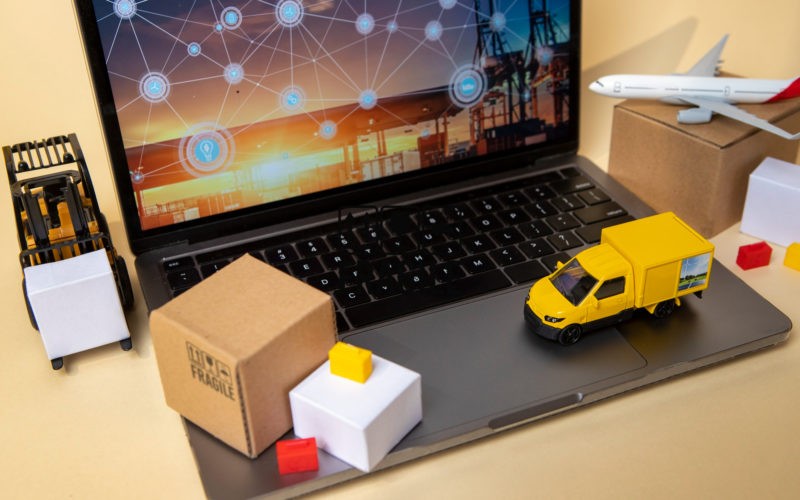Logistics is challenging to oversee and fraught with potential cost increases. Technology can benefit logistics in many ways. Not only is tech a crucial part of logistics, but technology is also in development or at various stages of adoption. This could benefit supply chains and companies with extensive logistics operations.
Operational success or failure depends on the efficiency of your logistics. Here is how technology can craft the best logistics arrangement for your organization.
Automate Workflows & Inventory Management
You can automate logistics operations. For example, you can automate tracking reports, customer emails, invoicing, analytics and performance tracking, and inventory ordering. This saves time and costs.
Plan out your inventory better and manage inventory according to seasonal demand. Automate orders and stocking. Reduce transport costs by ordering at the right time of year. Reduce inventory holding costs. Minimize stockouts and overstocking and plan your inventory using real-time data.
Optimize Logistics Operations
Through advanced tracking and real-time analytics, you can investigate goods movement, identify bottlenecks within your supply chain, optimize transportation routes, and use data to drive your decision-making to optimize your logistics more effectively.
A third party logistics provider can offer all these technology benefits in logistics and more. They’re experts. Their operations are already hyper-optimized for anything you throw at them. You may even find cost savings due to increased efficiencies overseen by third-party logistics services.
Digitized Documentation & Artificial Intelligence
When your documents are digital, they are faster and easier to send and receive, store, and refer to. A company no longer needs a file cabinet. It’s all automated, digital, and available for reference.
AI-identified patterns and predictions can forecast supply chain issues and demand, optimize routes, and share changing market conditions you may not know about. AI can also be paired with IoT devices, such as sensors, RFID tags, and GPS trackers, to analyze assets’ location and performance in real time.
Faster Submissions & Operations
Information sharing through automated technology is advantageous, particularly if you move products internationally. You can immediately ensure data is submitted to relevant government departments and customs officials.
Using technology in the warehouse, particularly with the ongoing integration of automation and robotics, you can move faster and more accurately with order picking and packing. This increases productivity and reduces errors. You can also fulfill orders faster than before, shortening delivery times significantly.
Automation and technology handle all sorts of jobs and tasks that would normally be manually performed, saving you money. It means your work can be better directed. Save on manpower and use labour on mundane and repetitive tasks.
Real-Time Updates
Current logistics technology offers real-time shipment visibility, status reports, automated alerts, and more. Customers and companies have never had so much information about product and delivery tracking.
Customers can receive alerts and messages or go online to check where their product is in the supply chain. Real-time visibility means the customer is never left wondering about their order or without an update, which reduces anxiety and improves customer satisfaction. If there are delays, notifications can also be sent directly to the customer.
Send information and alerts to relevant stakeholders. Share information between different departments. Automated emails, pre-alerts, and analytical reports make coordinating internally and externally easier.
Better Security & Compliance
With technology in your logistics, you can improve security significantly, track materials and shipments more accurately, and monitor transport and inventory. This does not even extend to the many ways smart security and surveillance technologies can be used to monitor facilities and access. Blockchain technology encrypts data and, where applied, creates a secure record of transactions that reduces the risk of fraud.
Enhance task and procedure accuracy by limiting errors. Have technology-based systems to handle various logistics tasks that do not require human presence. Eliminate human errors.
Compliance may be essential to your logistics structure, from ensuring document submissions to setting up systems to adhere to applicable regulations. This will minimize penalties and delays tied to non-compliance.
Last-Mile Delivery Drones
Though this tech is still developing, delivery drones and autonomous vehicles may be the future norm for last-mile delivery. Eco-friendly and reducing the need for human labour, these vehicles can move parcels from transportation hubs to their final destination.
Potential of IoT in Logistics
The Internet of Things (IoT) is a key player in logistics today. It allows real-time tracking and monitoring of goods at every stage of the supply chain. By using sensors and RFID tags in shipments and on gear, logistics firms can collect a lot of data about things like temperature, dampness, location, and how things are moving.
This data helps them make smart choices ahead of time, such as changing the route of a shipment to avoid delays or altering how goods are stored to prevent them from going bad.
IoT gadgets also make it easier to predict when equipment might need maintenance by constantly monitoring the state of vehicles and machinery. Spotting problems early means they can be fixed before they turn into expensive work stops. This means companies can cut down on idle time and improve operations.
With IoT in their toolkit, logistics managers can see more and control their supply chains.
Improve Communication with Cloud-Based Platforms
Cloud computing has changed the game for logistics companies, making it easier to handle their operations with scalable and secure data storage and communication options. These cloud-based logistics solutions mean you can work together in real time, no matter where you are, ensuring that suppliers, carriers, and customers are always on the same page.
Additionally, cloud platforms have advanced analytics capabilities, which help companies make sense of their data for practical use. Logistics managers can look at past trends and performance data for better routing decisions. They can also manage inventory more efficiently and spot opportunities for improvement.












